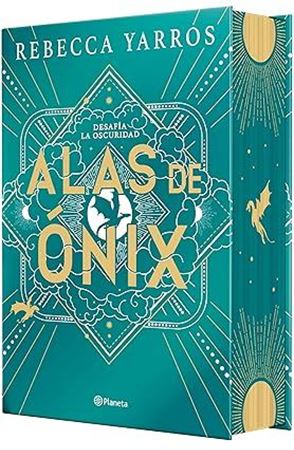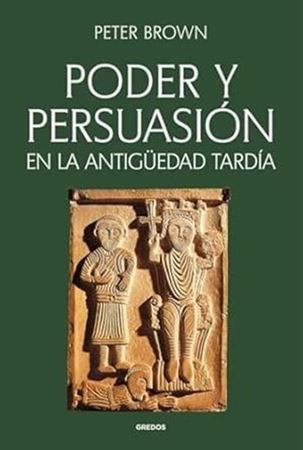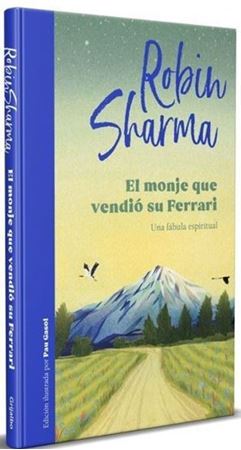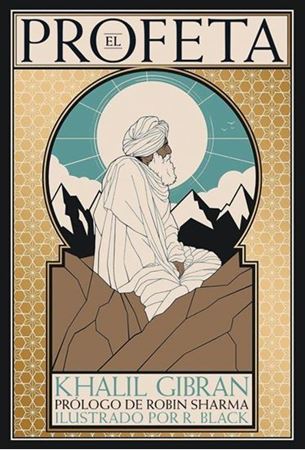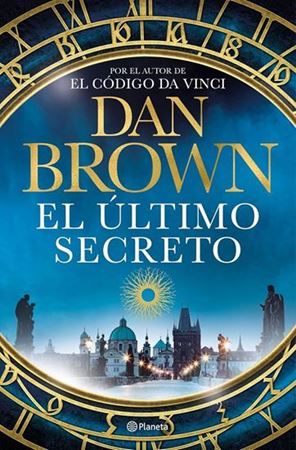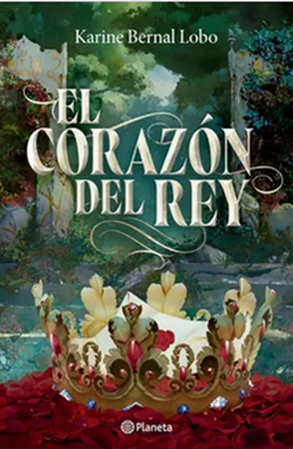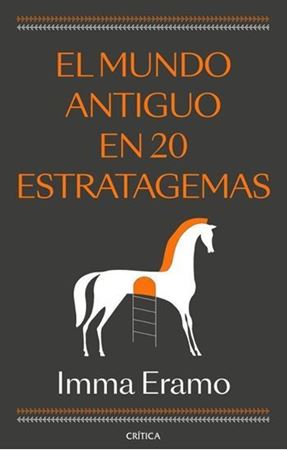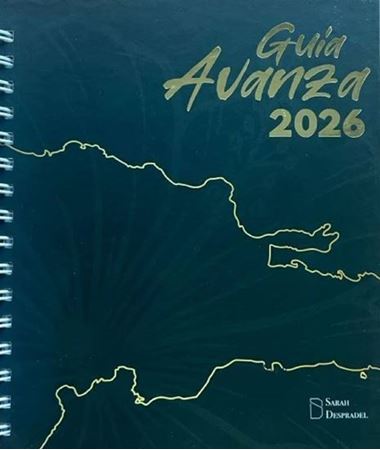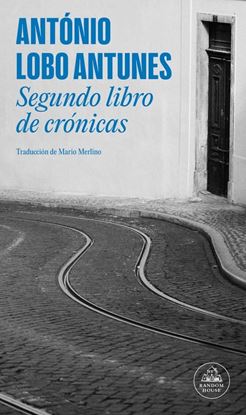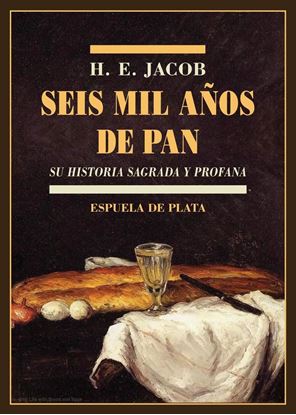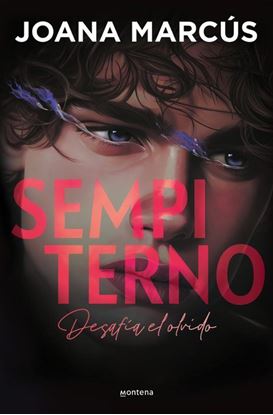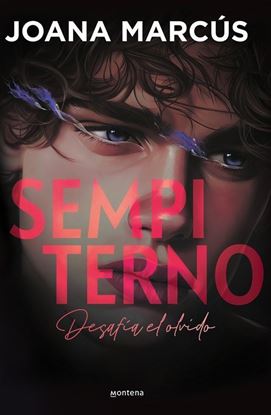

NOVEDADES
SECRETOS QUE QUEMAN
En una isla de perfecta, llena de encantadoras tiendas para turistas, playas prístinas e increíbles casas frente al mar, viven tres chicas que solo quieren venganza.
Kat está harta de que su ex mejor amiga la intimide.
Lilia siempre ha cuidado de su hermana pequeña, así que cuando descubre que uno de sus amigos ha estado saliendo con ella en secreto, tiene que ponerle fin.
Mary vive atormentada por un evento traumático, y el chico responsable aún no ha recibido lo que se merece.
Ninguna puede llevar a cabo sus planes en solitario. Pero juntas... todo es posible.
A fin de cuentas, la venganza es un plato que se disfruta mejor entre amigas.
1,400
SED UN LIDER AUTENTICO
Sed un líder auténtico; es más que una guía; es una invitación a transformar tu manera de liderar, basándote en los principios de la esencia, la confiabilidad, la justicia, la visión, la inspiración, la motivación y la comunicación. Cada página está impregnada de sabiduría práctica y profunda que te ayudará a descubrir y desplegar tu auténtico potencial como líder.
Este libro está dirigido a gerentes, empresarios, maestros, líderes religiosos, políticos y a todos aquellos que buscan dejar una huella positiva y duradera en el mundo. Con un enfoque inspirador y accesible, Elohin Jose González nos desafía a mirar hacia adentro, a liderar desde el corazón y a ser la mejor versión de nosotros mismos.
Se han escrito cientos de libros que tratan sobre el liderazgo en el sector empresarial, laboral, eclesiástico, político, etc. Sin embargo, en esta pieza, el destacado mentor de líderes nos sorprende logrando confeccionar los distintos estilos de liderazgo y los 7 principios irrefutables del liderazgo para lograr un liderazgo auténtico, lo que convierte a este libro en una verdadera obra de arte.
Embárcate en esta travesía de autodescubrimiento y crecimiento, y descubre cómo los principios del liderazgo auténtico pueden transformar no solo tu vida, sino también la de aquellos a quienes tienes el privilegio de liderar. Tu viaje hacia un liderazgo auténtico comienza aquí.
500
SEGUNDO LIBRO DE CRONICAS
La vida en todas sus formas, las anécdotas de infancia y el recuerdo de amigos desaparecidos, una calle de Lisboa, un árbol en el jardín familiar, un viaje a Italia, una noche en un hotel de Munich, la entrega de un premio literario, la inspiración, la dificultad de escribir... La vida de António Lobo Antunes en todos sus aspectos conforma el universo de las crónicas que el autor portugués viene ofreciendo desde hace años en distintas publicaciones periódicas de todo el mundo. Estas crónicas, y las que se publicarán en sucesivos volúmenes, representan lo más parecido a la autobiografía de uno de los escritores cruciales del panorama literario mundial.
1,350
SEGUNDO PISO. UNA HISTORIA REAL
Quiero dejar este libro como una experiencia de mi paso por la vida, la más bonita razón que puede haber en una persona que ama con pasión lo que hace: ejercer su profesión de médico; pero sobre todo, para que quede como un testimonio del valor que tiene la oración y la fe, y de cómo trabajar sin descanso rinde sus frutos, aunque se tenga que esperar sin llegar a la desesperación y solamente creer en una palabra: Fe. La fe lo mueve todo, hasta lo imposible se vuelve posible si se hace con fe y esperanza, ya lo dice el refrán: “Lo último que se debe perder es la esperanza”, y a esto le agrego yo: ¿sabes lo es que la fe? "La fe es la certeza de lo que se espera y la convicción de lo que no se ve”, pero “sin fe es imposible agradar a Dios”. (Hebreos 11:1-6).
Pasé de que me hicieran una cirugía que se consideraba de rutina, pero a la vez compleja: una cirugía del corazón, a otra que no se considera de rutina, como lo es hacer una cirugía del cerebro, a estar en coma, sin poder comunicarme, sin poder escribir; a pasar por una recuperación que los médicos estaban muy sorprendidos por lo pronto que se produjo, a darme de alta. Todo esto sucedió durante el mismo ingreso.
En carne propia tuve la bendición de vivir la peor experiencia de mi vida a mis 48 años, pero a la vez la mejor experientia, la que me definiría por el resto de mi vida.
Lo que aquí plasmo es para que el esfuerzo que realicé y sigo realizando le sirva de motivación a otros que, al igual ya, hayan pasado o estén pasando por la misma situación. Cuando piensan que todo está perdido y se propongan claudicar, no lo hagan, pues. la victoria está más cerca de lo que imaginan. Esto pretende ser un fiel suceso de lo de que me pasó, y de cómo me sigue afectando al pasar de los años; aquí se lo dejo para su acervo y disfrute.
1,000
SEGURIDAD PERSONAL PARA DESPISTADOS
Seguridad personal para despistados: Manual de autoprotección para gente con sentido común es una guía práctica y divertida para quienes desean protegerse sin complicarse la vida. Con un enfoque claro, directo y hasta sarcástico, este libro ofrece soluciones reales para evitar accidentes, robos y trampas digitales que acechan a diario. Incluye 21 soluciones prácticas, recomendaciones tecnológicas y un método probado para reducir errores: el Pointing and Calling. Escrito por Carolina Ramírez, especialista en seguridad e inteligencia, este manual combina datos duros con humor fino y sentido común para ayudarte a vivir más seguro… sin perder la elegancia.
1,000
SEIS MIL AÑOS DE PAN
Seis mil años de pan. Su historia sagrada y profana fue publicado originariamente en inglés en 1944 y sigue siendo hoy en día, pese a los años transcurridos, una obra que no ha perdido actualidad y ha sido a menudo reeditada. Se trata de una monumental historia del pan, el alimento del hombre más difundido y antiguo, a lo largo de más de 6.000 años, contada bajo todo los puntos de vista posibles: el histórico, el cultural, el religioso, el tecnológico… Incluso la cábala y el misticismo encuentran su lugar en estas páginas informadísimas y sutiles por vez primera presentadas al lector español. Heinrich Eduard Jacob (Berlín, 1889-1967) fue un periodista y escritor alemán especialmente activo durante los años de entreguerras. Cultivo exitosamente la narrativa y el teatro la biografía y estuvo también muy interesado por el música y cine. A causa de sus actividades antinazis fue detenido e internado, tras la anexión de Austria, donde residía, en los campos de concentración de Dachau y Buchenwald y le fueron confiscadas todas sus pertenencias. En 1939, gracias a su esposa, consiguió llegar a los Estados Unidos, país en el que vivió y trabajó hasta 1953 en que regresó a Alemania.
1,950
SEMPITERNO (TB) (ETEREO 2)
El mundo de Caleb se ha desmoronado. El tiempo transcurre, pero él sigue viviendo en esa misma noche. Sigue paralizado en ese mismo dolor. Su familia necesita que despierte. Él necesita buscarla. Y necesita encontrarla.
El mundo de Victoria se ha transformado. Intenta descubrir quién es, pero su antiguo yo sigue fragmentado en cientos de pedazos. El chico que la acompaña necesita que ella sea fuerte. Ella necesita entender por qué siente esa conexión con él. Y por qué una voz en lo más profundo de su cabeza le dice que tiene un hogar al que volver.
1,300
SEMPITERNO (TB) (ETEREO 2) (AR)
Tras varios meses en las sombras, la familia de extraños intenta recomponerse. El mundo de Caleb se ha desmoronado. El tiempo transcurre, pero él sigue viviendo en esa misma noche. Sigue paralizado en ese mismo dolor. Su familia necesita que despierte. Él necesita buscarla. Y necesita encontrarla. El mundo de Victoria se ha transformado. Intenta descubrir quién es, pero su antiguo yo sigue fragmentado en cientos de pedazos. El chico que la acompaña necesita que ella sea fuerte. Ella necesita entender por qué siente esa conexión con él. Y por qué una voz en lo más profundo de su cabeza le dice que tiene un hogar al que volver. Huir ya no es una opción para nadie. La única posibilidad de supervivencia es enfrentar el pasado y desafiar el olvido. ¿Se puede cambiar el destino cuando ya ha sido escrito? ¿Se puede encontrar aquello que ya se ha perdido?
1,350
SEMPITERNO (TD) (ED.ESP) (ETEREO 2) (ARG
Tras varios meses en las sombras, la familia de extraños intenta recomponerse. El mundo de Caleb se ha desmoronado. El tiempo transcurre, pero él sigue viviendo en esa misma noche. Sigue paralizado en ese mismo dolor. Su familia necesita que despierte. Él necesita buscarla. Y necesita encontrarla. El mundo de Victoria se ha transformado. Intenta descubrir quién es, pero su antiguo yo sigue fragmentado en cientos de pedazos. El chico que la acompaña necesita que ella sea fuerte. Ella necesita entender por qué siente esa conexión con él. Y por qué una voz en lo más profundo de su cabeza le dice que tiene un hogar al que volver. Huir ya no es una opción para nadie. La única posibilidad de supervivencia es enfrentar el pasado y desafiar el olvido. ¿Se puede cambiar el destino cuando ya ha sido escrito? ¿Se puede encontrar aquello que ya se ha perdido?
1,700

